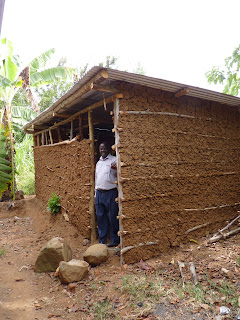It was
almost a year ago, when I first read the description of the education
volunteer’s position in Shianda. Among the tasks there was included training on
different teaching methods imparting skills and knowledge to teachers of
schools in the surrounding area.
After I got
selected and was participating in the preparatory training held by MONDO in
Esthonia, I read the reports of the previous education volunteer, where it was
mentioned that even though teachers have knowledge about various teaching
methods, they struggle in putting them in practice. My coordinator confirmed
that, assuring me that educators seem to welcome the volunteers attending their
trainings, nodding their heads but what lacks is real implementation and that
monitoring is important.
Then I
started reflecting on the causes that hinder the successful application of the
methods suggested, as well as what alternatives could be considered for
experimentation. And I thought about ICDP… I remembered that back when I was
studying my Master’s in Oslo, Norway we were trained as class and attained a
certificate as ICDP facilitators. It was the initiative of the professor Berit
H. Johnsen to train us and I knew it was a programme which had been implemented
in various contexts of Africa, South America, South-East Asia and Europe. However, I hadn’t taken it for granted that I
could make use of it in Shianda, as I decided to first reach, do the needs
assessment and discuss with stakeholders.
During the
first month of my deployment I visited most of the schools we cooperate with
and having in mind Johnsen’s Curriculum Relation Model, I tried to observe as
many of the interrelated curriculum areas as possible: students, educational intentions, content,
assessment, methods and organization, communication and care (in
teachers-students interactions). Care is both a main concept of the EU Aid
Volunteers initiative, as its motto is “We Care, We Act” and the core of the
ICDP Programme.
As an
educator myself, I am a fan of Vygotsky’s sociocultural theory of cognitive
development. This roughly says that all complex mental functions, like
speaking, understanding, reflecting etc. come after quality social
interactions. So, psychosocial care as a principal ingredient of healthy social
interactions is the basis for all intellectual functions. But what happens when
this basis is unstable? What happens when teachers are unaware of their caring
skills? How can my work be sustainable if they don’t realize their real
potential as humans? How can students learn effectively in settings which lack
positive relations?
Having
observed here but also experienced myself as a student the authoritarian way of
interacting and having been asked questions like: “If not by beating, then how
can I handle wrong-doers?” it was evident that the time has arrived for a
psychosocial care programme to get started in Shianda. I discussed my idea with
my director and I was happily surprised when she told me she had attended in
the past a similar programme in Nairobi and she reassured me she finds it to be
highly relevant in our context: “This is the right place to do it”. So, did I!
The role of
the ICDP facilitator is similar to the one Socrates –the Greek philosopher- had,
using the “maieutic method” or “Socratic dialectic” with his students. That
means that the facilitator doesn’t have the intention to convey new truth to
the caregivers, but to assist them to find the truth in themselves. His/her goal
is to support and empower them so that they feel trust and confidence for their
capacities and existing experience. This so-called “resource-based approach” gives
caregivers the opportunity to personally explore their interactions,
reactivating their caring competence and becoming conscious of it in their
everyday encounters with children (and not only). ICDP is a programme of human
care in general that covers all levels of our interpersonal relations.
A crucial term for ICDP is sensitization. Without sensitivity, care cannot exist. Thus, it’s important to increase caregivers’ sensitivity so that they can use their empathic ability and their own practical experience to relate and communicate better with the students. There is no set of recipes that one can use for correct caring actions in any given situation. Nevertheless, teachers can be provided guidance to improve their contacts with children. And this guidance is imparted through seven sensitization principles.
First and
foremost, it’s fundamental that a close and trusting relationship is
established between facilitator and caregivers with mutual respect and
willingness to listen. This is something that is built gradually. So, after
getting to know them during the observation period, I planned to have weekly meetings
with teachers’ groups for six weeks on a specific day and time that fits each
school. We also created a contract agreement, where this commitment is
“formally” depicted. Furthermore, I intentionally spend personal time with them
mostly before and after the sessions by sharing worries and thoughts.
Another
sensitization principle is to promote a positive conception of the children, so
that caregivers are encouraged to see that their negative aspects can be
understood in a different way. But how can teachers perceive students
positively when they are not able to perceive themselves on the same way?
And here
comes the third principle, which is about pointing out positive features in
caregivers’ existing practice. For that, every time I entered to a class for
observation (or observed the less structured break time), I took notes of the
caregivers’ strengths in the teaching-learning situation/communication with the
intention to let them know in a later stage.
Once teachers realize their strengths and feel enabled, they can rely on
them and head one step further.
I promise
to keep you updated on the rest four sensitization principles as they’re taking
place in our ICDP sessions. Stay tuned! Till then take care and “mulembe” (“peace”
in local language-Luhya)!















